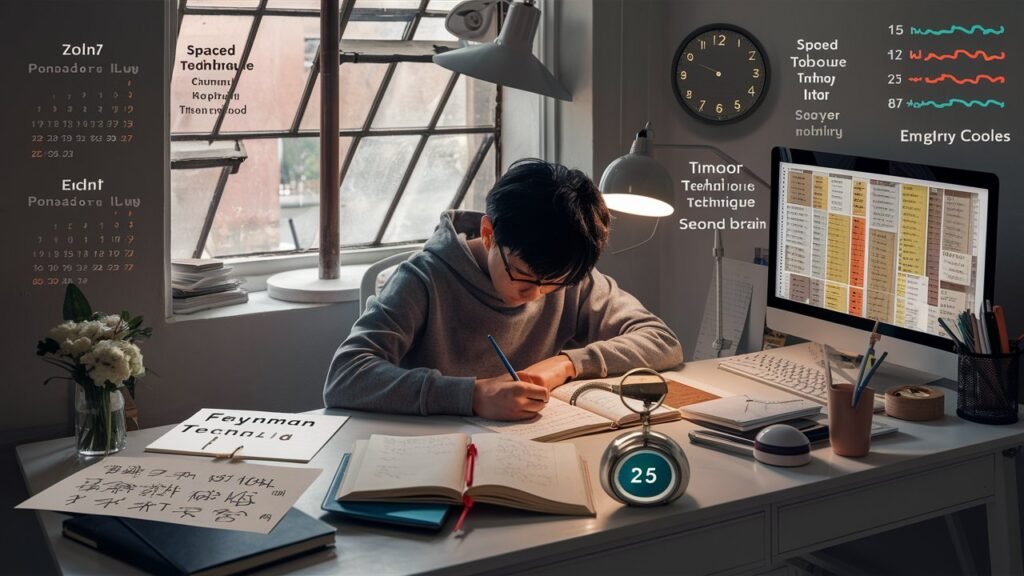Imagine mastering complex concepts with ease, retaining information effortlessly, and making the most of your Study time. How can we get unique insights and practical steps to boost our productivity and deepen our understanding?
Let’s dive right into these techniques and discover how we can turn studying, a seemingly daunting task into a rewarding experience.
Feynman Technique:
It’s a method of learning and understanding concepts by teaching them in simple terms. It involves four steps:
Choose a Concept: First, Write down the concept on a sheet of paper, that you aim to learn.
Teach it to a Child: Explain it using simple language and analogies, as if you were teaching it to a toddler or someone with no background knowledge.
Identify Gaps and Review: Identify areas where you struggled to explain or simplify. Go back to your source material to review and fill in those gaps.
Simplify and Refine: Rewrite the explanation in simpler terms and use analogies or diagrams to make it clearer.
Blurting Method:
It is a self-testing technique to enhance recall and understanding.
Review Material: Study the material thoroughly.
Close the Book: Keeping the material aside, write down everything you can recall on a blank sheet (blurting).
Compare and Correct: Compare your notes with the source material. Identify areas you missed or got wrong.
Repeat: Focus on the missed areas and repeat the process until you can recall all the information accurately.
Parkinson’s Law:
Set a Time Limit: Assign a specific, shorter time frame for a task.
Focus Intensely: Work on the task with full concentration within that time limit.
Avoid Procrastination: By setting tighter deadlines, you reduce the likelihood of procrastination and increase productivity.
Second Brain:
Capture Information: Collect notes, ideas, and information from various sources.
Organise: Categorize and tag the information for easy retrieval.
Review and Use: Regularly review your notes and use them to enhance your learning and productivity.
Energy Cycles:
Identify Peaks: Track your energy levels throughout the day to identify when you are most alert and focused.
Schedule Important Tasks: Plan your most demanding or important study sessions during these peak times.
Rest and Recharge: Use low-energy periods for less demanding tasks or breaks to maintain overall productivity.
Spaced Repetition:
Review Regularly: Initially review new information frequently (e.g., daily).
Increase Intervals: Gradually increase the time between review sessions (e.g., every few days, then weeks).
Use Tools: Utilize spaced repetition software (e.g., Anki, Quizlet) to manage the intervals and ensure systematic review.
Pomodoro Technique:
Set a Timer: Work for a set period, typically 25 minutes (one Pomodoro).
Take a Short Break: After 25 minutes, take a 5-minute break.
Repeat: Repeat the process for four more intervals.
Long Break: After completing four Pomodoros, take a longer break (15-30 minutes).
As you incorporate these strategies into your routine, you’ll find yourself more prepared, confident, and capable of tackling any educational challenge. So, take the first step towards transforming your study habits and unlock a world of limitless learning possibilities.









